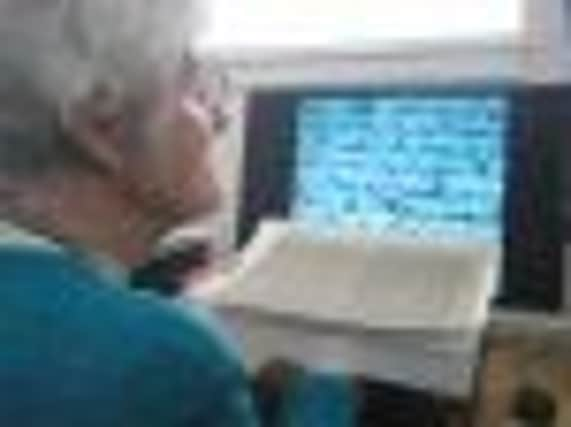Dr Livingstone’s diary of Congo massacre revealed


Despite running out of writing supplies, the explorer and missionary was so determined to record the killings by slave traders in Nyangwe that he made his own ink from plants and berries, before scribbling on sheets of an old newspaper.
The document, known as the Nyangwe Diary, could not be read for more than 140 years because the ink faded, but the use of a cutting-edge technique has revealed his words for the first time in more than a century.
Advertisement
Hide AdDescribing villagers’ attempts to flee, Dr Livingstone wrote: “The canoes were all jammed in a creek at the bottom of the market place and the owners could not get them out – women threw away their produce and scrambled for dear life – men left their paddles in dread as the merciless fire was rained upon them.”
The pages, written in 1871, are the last written accounts by Livingstone until his ncounter with journalist Henry Morton Stanley, who greeted him with the immortal phrase: “Dr Livingstone, I presume?”
Two years later, on 1 May, 1873, Livingstone died from malaria.
The diary forms the centrepiece of an exhibition, Shining New Light on Livingstone, launching this month at the National Trust for Scotland’s David Livingstone Centre in Blantyre, South Lanarkshire, where the explorer was born 200 years ago.
His great-granddaughter, Elspeth Murdoch, 84, from Buchlyvie, Stirlingshire, viewed the document.
Ms Murdoch, who was born at a medical mission in Chitambo, Zambia, not far from where Dr Livingstone died, said: “It’s amazing that this is his writing on a newspaper that we would never have thought we could read.”
Advertisement
Hide AdThe exhibition is the result of an 18-month project, in which the centre and National Library of Scotland worked in partnership with international experts, who used a technique known as spectral imaging to recover the original diary text. The process uses ultraviolet and infrared lights, as well as high-resolution digital photography.
The centre, which was awarded museum status in January, reopens to the public today, with Shining New Light on Livingstone launching on 19 March, the 200th anniversary of Livingstone’s birth.